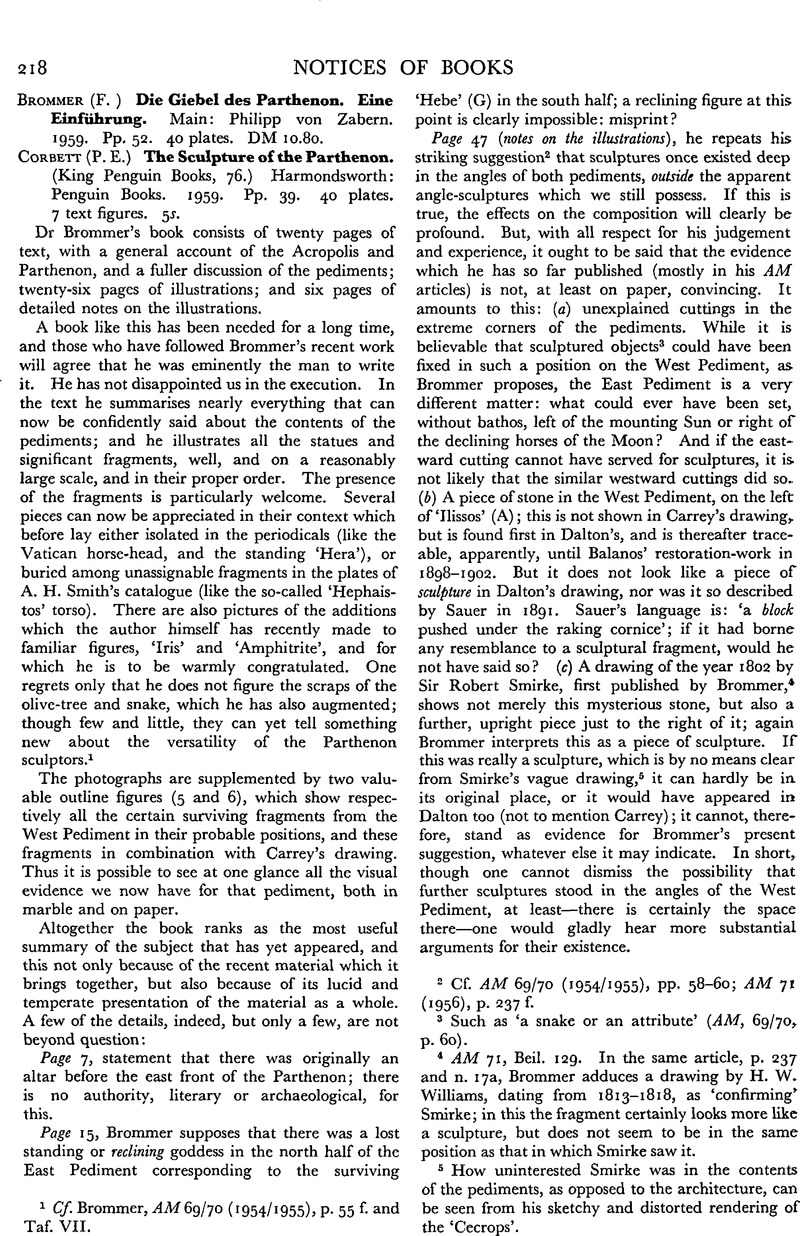No CrossRef data available.
Article contents
(F.) Brommer Die Giebel des Parthenon. Eine Einführung. Main: Philipp von Zabern. 1959. Pp. 52. 40 plates. DM 10.80. - (P. E.) Corbett The Sculpture of the Parthenon. (King Penguin Books, 76.) Harmondsworth: Penguin Books. 1959. Pp. 39. 40 plates. 7 text figures. 5s.
Published online by Cambridge University Press: 18 September 2015
Abstract

- Type
- Notices of Books
- Information
- Copyright
- Copyright © The Society for the Promotion of Hellenic Studies 1961
References
1 Cf. Brommer, , AM 69/70 (1954/1955), p. 55Google Scholar f. and Taf. VII.
2 Cf. AM 69/70 (1954/1955). pp. 50–60; AM 71 (1956), p. 237 f.
3 Such as ‘a snake or an attribute’ (AM, 69/70, p. 60).
4 AM 71, Beil. 129. In the same article, p. 237 and n. 17a, Brommer adduces a drawing by H. W. Williams, dating from 1813–1818, as ‘confirming’ Smirke; in this the fragment certainly looks more like a sculpture, but does not seem to be in the same position as that in which Smirke saw it.
5 How uninterested Smirke was in the contents of the pediments, as opposed to the architecture, can be seen from his sketchy and distorted rendering of the ‘Cecrops’.
6 In the regular Parthenon attitude for this movement; cf. North Frieze, Slabs XI, no. 43, and XVII, no. 58 (indistinguishable in attitude from the pedimental Athena, so far as she is preserved); West Frieze, Slab XIV, no. 27.
7 So most recently Fuchs, W., die Vorbilder der neuattischen Reliefs (1959), pp. 142–3.Google Scholar


